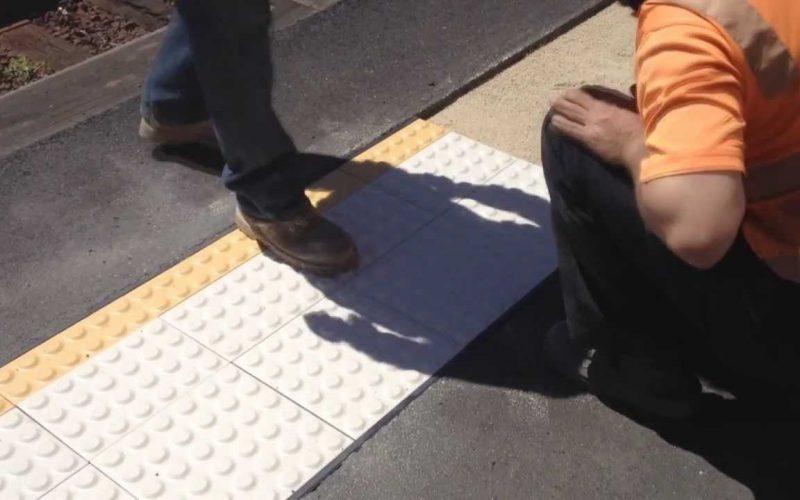
Are you planning to install tactile indicators in slip-prone areas for the safety of the disabled? If yes, then you might be wondering how to install it. Although there are many ways how you can install tactile indicators Melbourne, you need to ensure that you position them correctly to avoid putting people’s life at risk. You need to use the correct tools and techniques to install it properly and inform disabled people correctly regarding which way to travel or when to expect a hazard. Having said that, if you are working with a client, you can follow our step-by-step guide below to ensure that the tactile indicators installation meets Australian Standards. Good luck!
Step 1: Mark the area for installing stainless steel tactile indicators
First, mark your preferred area and clean it to install the stainless-steel tactile indicators. Now, blow away any dust and make it ready for the application. Fill any cracks or joints with high-quality Construction Polyurethane such as Silaflex or Bostik Sealand Flex and even the high or rough areas into a smooth surface. Now mask the area with masking tape to avoid staining the untitled substrate.
Step 2: Apply Primer on the surface
Once the above steps are done, now it’s time to apply the primer. Make a small hole at the tip of the primer sausage and apply and spread it evenly using a supplied applicator. Use FORTIS Ad512 for the best results. Now, wait for the primer to expand for 10 minutes. The primer will expand in an open atmosphere and you might need to scrape the extra. Scrape off the excess (if any) and allow only a minimal layer of the primer to be on the surface. A tip: Always read the warnings and instructions on the package below for better application.
Step 3: Place the tile on the primer
Now it’s time to install the stainless tactile indicators on the primers. Place the tile while the primer is still wet and press it down evenly on all sides so that it bonds well with the primer. Wait for some time till it’s set and then repeat it with the next tile.
Step 4: Repeat the same process with other tiles
Once the first tile is set and dry, peel the backing off the next tile and repeat the same procedure. Ensure to keep a minimum of 2mm gap between the tiles on all sides. Keep doing this until the pad is complete. You can use a gap gage to keep equal gap measurement on all sides.
Step 5: Remove the masking tape
After all the tiles are set, now remove the masking tape. Take a rubber mallet and press down each dot or strip, especially focusing on the sides. You can use flat timber too for the process. If you see any excess primer on the ends, scrape it off and keep it clean.
Step 6: Close the edge of the pad using Flex or Bostik Seal
Repeat the same process as above again after 1 hour. This will ensure that the pads are placed properly. Now seal the edges of the pad with a Construction Polyurethane at the edge of the title and the substrate.
So, these are the steps that you need to follow to install tactile indicators appropriately. Remember you need to give sufficient time for the installation of tactile indicators. You need to keep a gap of a minimum of 21 days before the installation of the tactile indicators Melbourne to set it properly. If you need any further assistance regarding the installation, you can contact our sales team at ‘The Wheel Shop’ and get your queries cleared.
Author Bio: Jennifer is an editor and author at The Wheel Stop Co. The Wheel Stop is a leading wheel stops, bollards and speed humps suppliers in Melbourne, Australia.





